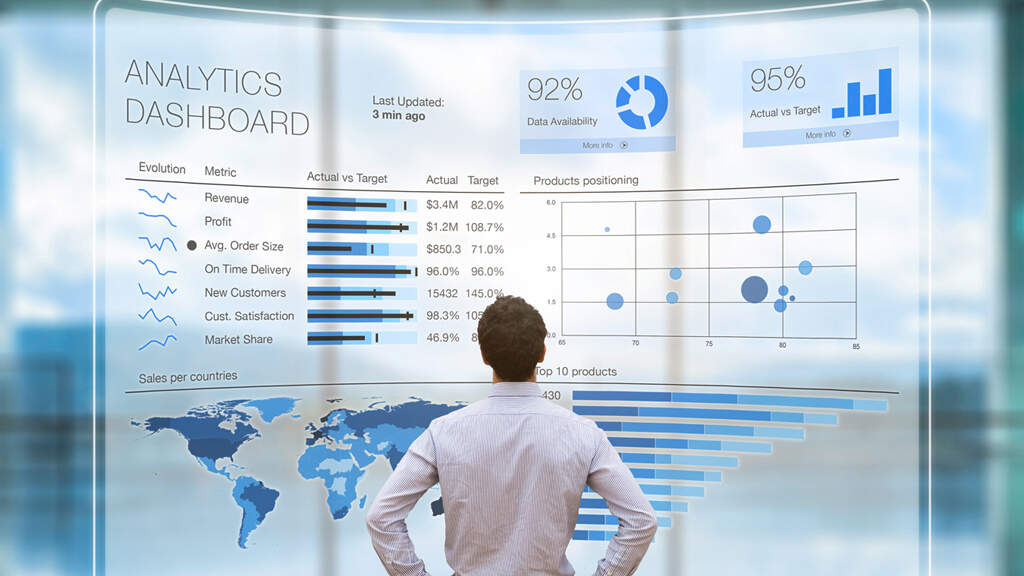The added value of logistics
First and foremost, logistics must add value for the customer. This means industry and retail companies should not view logistics as a cost factor, but rather as a source of added value. Complex logistics increase the value of a product in the form of service quality. To measure this value added, companies should create a logistics balance sheet—that’s the advice of Dr. Andreas Froschmayer, Corporate Director Corporate Development, Strategy & PR at DACHSER.

Actively designing logistics is a job for top management, and many companies have already firmly embedded it in their corporate agendas. Mobilizing the entire value chain entails both restructuring transportation networks as well as reconfiguring the entire flow of goods, information, and payment. This transformation involves continuously expanding the tasks and functions of logistics in industry and retail, broadening the service portfolio of logistics providers, and adapting these to the new logistics flow models.
Although they are cognizant of these developments, executives still frequently base decisions about logistics purely on shipment costs. Yet these costs represent but a mere fraction of all logistics parameters. Companies can tap the greatest benefits logistics has to offer through the structured planning and directing of all goods and information. This, in turn, improves the market’s perception of the quality of logistics services. With this realization in mind, many attempts have been made to better assess the performance of logistics actions in a holistic way. This led to the idea of the logistics balance sheet.
Performance of logistics actions
How much is logistics balance sheet like a company balance sheet? Each provides, in a concentrated form, an overview of a capital and asset structure as well as performance. While the latter does it for the company as a whole, the former covers the company’s logistics activities.
A company balance sheet is a classic tool in the business administration portfolio, whereas the logistics balance sheet is an innovation. It delivers valuable information that the legally required accounting practices cannot provide.
The basic structure of the logistics balance sheet leans heavily on that of a “regular” balance sheet. According to Section 238 of the German Commercial Code, an accounting department that reports the company’s financial situation in the balance sheet must be “capable of providing a third-party expert with an overview of the company’s underlying transactions and the state of the business within an appropriate period of time.” It therefore follows that the logistics balance sheet should provide an overall picture of the company’s logistics activities and make it possible to identify sensible courses of action. As with a “regular” balance sheet, a logistics balance sheet has a column for assets and a column for liabilities.
The assets column can be summed up with the phrase “use of resources.” In logistics terms, this may include using existing resources to set up facilities for logistics operations, such as warehouses or mobile equipment. But where does a company get the funds for logistics? One answer is its own resources. In a broad sense, this refers to the equity a company puts aside for logistics. Another source would be third-party resources, meaning the services and capital that logistics providers devote to providing their services. In other words, the funds a company invests in logistics encompass all the resources and competencies that the company invests as well as the financial strength it brings to bear.
On a logistics balance sheet, profit expresses the effects produced by logistics. It is possible to quantify those effects by netting funds invested (input into logistics) against how those funds are used (output of logistics investment). The broadly defined third-party resources make up the proportion of logistics that does not stem from industry or retail itself, but rather is contributed by a logistics provider. These logistics services are not realized with the company’s own financial strength, but instead are an external accomplishment made with the help of capital (terminals, warehouse facilities) that the service provider has invested.

Logistics balance sheet
In sum, a logistics balance sheet is a way to regain the overall view that became obscured by multiple individual technologies adopted in the sweep of digitalization. The value of a logistics solution, therefore, arises through the systematic integration of physical transport logistics, the use of IT and innovative technologies, as well as intelligent planning and direction by organized groups of people.
If we stop seeing logistics as a “cost problem,” and see it instead as something that can add value, we should be able to apply and integrate the new ideas of digitalization, allowing us to design and operate future-proof logistics systems for industry and retail.